Blood And Its ComponentsHumans and other animals' circulatory systems use blood, a bodily fluid, to carry nutrients, oxygen, and metabolic waste products to and from the cells. Blood also carries waste products away from the cells. 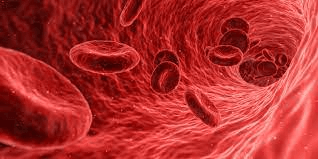
The heart's pumping motion moves blood through blood arteries and throughout the body. In the lungs of animals, oxygen is transported via arteries from the air we breathe to the body's different tissues. On the other side, veins transport carbon dioxide-rich blood from different tissues of the body to be expelled out of the body. All the terms related to the blood usually start with 'hemo' or 'hemato' initials. These words are derived from the Greek word "haima," which means "blood". In anatomy and histology, blood is regarded as connective tissue because of its origin and structure. It has fibrinogen to form molecular fibers, and its origin is in bones. 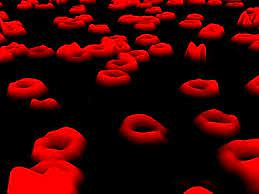
Composition of BloodIf you've had a blood test, it was probably taken from a small vein in your arm and sent to a lab for evaluation. The types of molecules present in the blood and their concentrations are identified by some of the most popular blood tests, such as those that measure fat or glucose levels in plasma. Other blood tests examine the components generated in the blood as well as their amounts and kinds. Hematocrit, a measurement of the proportion of RBCs (erythrocytes) in a blood sample, is one such test. It is done by centrifuging the blood sample in a centrifugation machine. As a result, the lighter portion of blood that is liquid plasma is separated from the denser part of the blood. The RBCs form the heavier component of the blood sample, and it separates out during centrifugation. It settles at the bottom of the hematocrit tube. A pale, thin layer of the remaining blood components is present above the erythrocytes. These are platelets and white blood cells (leukocytes) (thrombocytes). The buffy coat is the name for this layer, which typically makes up less than 1% of a blood sample. The blood plasma, which makes up most of the sample and is often a light, straw-colored fluid, is located above the buffy coat. The term "packed cell volume" is also frequently used to describe the volume of erythrocytes following centrifugation. Blood typically has around 45 percent erythrocytes, although samples can range widely from 36 to 50 percent. Males and females give different hematocrit readings. Males usually have 42-52% (47% mean), whereas females' normal hematocrit reading ranges from 37-47% (41% mean). Since the WBC and platelet percentages are so modest, the other produced constituents are often not considered when calculating the hematocrit. The fraction of blood that is not an erythrocyte is therefore known as the mean plasma percentage, roughly 59 percent for females (or 100 minus 41) and 53 percent for males (or 100 minus 47). 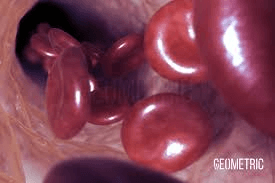
Characteristics Of Blood in MammalsThe typical density of blood, which makes up 7% of an adult's body weight, is 1060 kg/m3, which is extremely similar to the density of pure water, 1000 kg/m3. The blood volume of a typical adult is around 5 liters (11 US points), or 1.3 gallons, and is made up of plasma and formed components. During the process of clotting, various components of blood are involved. RBCs (Erythrocytes), WBCs (Leukocytes), and platelets play a major role. Most of the blood is made up of plasma (54.3%), followed by RBCs (that's why blood appears red), and only 0.7% of blood is made up of white blood cells. Cells in BloodRed blood cellsThe concentration of red blood cells per microliter of blood
Red blood cells contain hemoglobin (it makes it red!). Oxygen is transported to the rest of the body by being bonded to hemoglobin (an important component). The glycoproteins that distinguish the various blood types are also present on the red blood cells, along with endothelial vessel cells and other cells. Hematocrit, the term for the percentage of blood made up of red blood cells, is typically about 45 percent. The total surface area of the human body's red blood cells would be around 2,000 times greater than the external surface of the body. 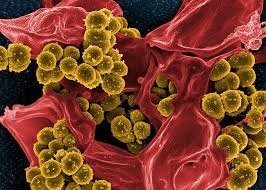
White Blood CellsLeukemia is a kind of leukocyte cancer. Leukocytes (WBCs) play an important role in protecting the body from foreign invaders by being an important part of the body's immune system. They attack the pathogens and other incoming microorganisms which are not part of the body and have intentions to harm it. WBCs also kill/destroy the old or abnormal cells of the body to maintain proper functioning. WBCs also do the removal of waste cell debris. PlateletsBetween 200,000 to 500,000 thrombocytes are present in an adult body. They are also known as platelets and aid in blood clotting (coagulation). Over the platelet plug, fibrin from the coagulation cascade forms a mesh. PlasmaThe blood's liquid medium, blood plasma, which is straw-yellow in hue, makes up around 55% of the blood. An average individual has a blood plasma volume of 2.7-3.0 liters (2.8-3.2 quarts). Plasma is a transparent liquid consisting of 92 percent water and 8 percent proteins. Plasma has a specific type of protein called plasma proteins. There are traces of other substances also present. Plasma is important in transporting essential organic molecules like glucose, fatty acids, and amino acids throughout the body. These substances are either dissolved into the aqueous portion or transported by plasma proteins. Plasma also transports carbon dioxide from tissues to the lungs. 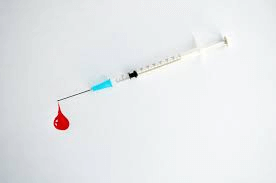
Serum albumin, blood-clotting factors (to aid in coagulation), and immunoglobulins are other crucial elements (antibodies)
The plasma that has had its clotting proteins removed is referred to as serum. Albumin and immunoglobulins make up the majority of the remaining proteins. PH Values of BloodBlood's pH is controlled to remain in a small range between 7.35 and 7.45, making it somewhat basic (compensation). Blood with an extracellular fluid pH below 7.35 is too acidic, whereas blood with an extracellular fluid over 7.45 is too basic. Typically, a pH of 6.9 or above is fatal. A number of homeostatic mechanisms carefully regulate blood pH, partial pressures of oxygen (pO2), carbon dioxide (pCO2), and bicarbonate (HCO3). These mechanisms primarily act through the respiratory and urinary systems to control the acid-base balance and respiration, also known as compensation. An arterial blood gas test measures these. Hormones are also carried by plasma, where they communicate with different tissues. There is a lengthy list of typical reference ranges for different blood electrolytes. 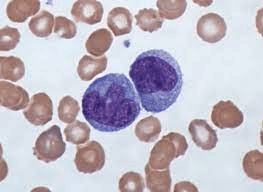
Although there are some little differences across species in terms of specifics like cell counts, size, protein structure, and so on, non-mammalian vertebrates share many characteristics with mammals' blood. However, there are several significant variations among non-mammalian Characteristics Of Blood in Vertebrates
General Characteristics of BloodThe first thing that springs to mind when we think of blood is its color. Initially, when blood takes up oxygen, its color is bright red. Bright red colored blood is released from the lungs to travel across the body into different tissues. Whereas blood rich in waste products like carbon dioxide is a deeper red. Tissues send deeper red blood to the lungs. This is due to the fact that hemoglobin is a pigment whose hue depends on how much oxygen is present. Blood has approximately five times more viscosity than that water; therefore, it is considered a viscous liquid. The viscosity's strength depends on different components of blood like plasma proteins. They increase the blood's thickness and increase the resistance to flow. 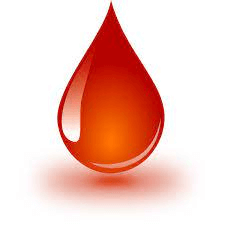
The viscosity of the blood significantly impacts blood pressure and flow. Think about how the movement of water and honey differ. In comparison to less dense water, honey would exhibit more flow resistance. The same idea also holds true for blood. Blood typically has a temperature of around 38 °C (or 100.4 °F), which is slightly higher than the average body temperature of 37 °C (or 98.6 °F). Blood moves against friction and resistance even if blood veins have comparatively smooth surfaces. This causes heat, which is why the blood temperature is slightly higher. The pH of blood is typically 7.4, but in a healthy person, it can vary between 7.35 to 7.45. On a chemical scale, blood is consequently slightly more basic (alkaline) than pure water, which has a pH of 7.0. Numerous buffers found in blood aid in pH regulation. Eight percent of an adult's weight is made up of blood. Adult males generally have 5-6 liters of blood on average, compared to 4-5 liters for females. Blood PlasmaNinety-two percent of plasma is water. A variety of elements, mostly proteins, are dissolved or suspended in this water. Although many of them are only present in very minute amounts, the plasma contains hundreds of different chemicals dissolved in it. 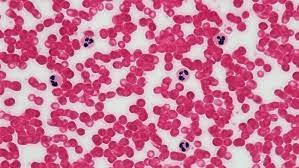
Proteins make up around 7% of the plasma's non-water content. In addition to a considerably smaller number of regulatory proteins, such as enzymes and hormones, these include a number of plasma proteins (proteins that are exclusive to the plasma). The following are the three main categories of plasma proteins: AlbuminThe liver produces albumin molecules, binding proteins, steroid hormones, and fatty acid transporters. Of all the plasma proteins, albumin is the most prevalent. Typically, albumin, or 3.5-5.0 g/dL of blood, makes up about 54% of the total protein composition of plasma. Remember that lipids are hydrophobic, yet their transport through the aqueous plasma is made possible by attaching to albumin. Because it keeps water inside blood vessels and pulls water from tissues through blood vessel walls and into circulation, albumin is also a major contributor to blood's osmotic pressure. In turn, this aids in maintaining both blood pressure and blood volume. GlobulinsThe globulins are the second most prevalent plasma proteins. Globulins, or 1.0-1.5 g/dL of blood, account for around 38% of total plasma protein volume. Three types of globulins are present: alpha, beta, and gamma. Alpha and beta globulins carry vitamins (A, D, E, and K) along with iron, lipids, and other nutrients. They also help to maintain osmotic pressure. Gamma globulins, often known as antibodies or immunoglobulins, are proteins that are involved in immunity. The liver produces alpha and beta globulins, whereas immunoglobulins are made by specialized leukocytes called plasma cells. FibrinogenFibrinogen is the least prevalent plasma protein. The liver also makes albumin, alpha and beta globulins, and fibrinogen. It is necessary for blood clotting, which is covered in more detail later in this chapter. About 0.2-0.45 g/dL of blood, or 7% of the total volume of plasma proteins, is made up of fibrinogen. Additional Plasma SolutesPlasma contains a vast range of additional chemicals in addition to proteins. Numerous dissolved gases, including oxygen, carbon dioxide, and nitrogen; numerous organic nutrients, such as vitamins, lipids, glucose, and amino acids; various electrolytes, such as sodium, potassium, and calcium ions; and metabolic wastes are among them. About 1% of the total volume of plasma is made up of all of these non-protein solutes. PhysiologyCirculatory SystemThe heart's pumping motion moves blood through blood arteries and throughout the body. In humans, the powerful left ventricle of the heart pumps blood through arteries to the body's outer tissues and back through veins to the right atrium. 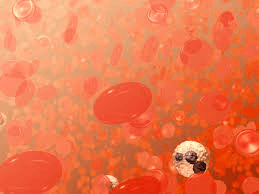
The left ventricle receives the blood and begins to pump it anew. After that, it enters the right ventricle, travels to the lungs via the pulmonary artery, and finally returns to the left atrium via the pulmonary veins. All of the body's cells receive oxygen from breathing air via the arterial blood. In contrast, the venous blood delivers carbon dioxide, a waste product of cell metabolism, to the lungs for exhalation. The pulmonary arteries, which house the majority of the body's deoxygenated blood while the pulmonary veins house their oxygenated counterpart, are an exception to this rule. Skeletal muscle contractions that compress veins and force blood through vein valves toward the right atrium may cause an increase in return flow. William Harvey notably outlined blood circulation in 1628. In vertebrates, a process known as hematopoiesis produces the different blood cells in the bone marrow. This process comprises erythropoiesis, which produces red blood cells, and myelopoiesis, which produces platelets and white blood cells. Very few bones in an adult body make up red blood cells in the body. Among these include; breastbone (sternum), vertebral bodies, pelvic bones, bones of upper arms and legs, and ribcage. But in the case of children, all the bones in the body can make red blood cells. 
Additionally, the thymus gland, which is located in the mediastinum, is a crucial source of T cells during infancy. The endocrine glands create hormones. The hypothalamus controls the blood's watery portion and is kept in check by the kidney. At the same time, the liver produces the majority of the blood's protein-containing molecules, including clotting proteins. The kidney actively secretes waste materials into the urine. The liver's spleen and Kupffer cells destroy healthy erythrocytes after around 120 days in the plasma. The liver also excretes some lipids, amino acids, and proteins. Oxygen TransportIn mammals and many other organisms, the hemoglobin molecule serves as the main oxygen carrier (for exceptions, see below). Hemoglobin combines with around 98.5 percent of the oxygen in a sample of arterial blood from a healthy person breathing air at sea level pressure. The other blood fluids contain around 1.5 percent of hemoglobin that is physically dissolved and unrelated to hemoglobin. When compared to the entire blood oxygen capacity if oxygen were just transported by its solubility, which is 0.03 ml O2 per liter blood per mm Hg partial pressure of oxygen, hemoglobin has an oxygen-binding capacity between 1.36 and 1.40 ml O2 per gram of hemoglobin (about 100 mm Hg in arteries). Arteries transport oxygenated blood from the heart and deliver it to the body via arterioles and capillaries, where the oxygen is consumed. Venules and veins then transport deoxygenated blood back to the heart, with the exception of the pulmonary and umbilical arteries and their corresponding veins. Adult humans' hemoglobin is typically between 98 and 99 percent oxygen-saturated as it leaves the lungs, delivering 950 to 1150 ml of oxygen per minute to the body. A healthy adult uses around 200-250 ml of oxygen per minute at rest, yet the deoxygenated blood that returns to the lungs is still roughly 75-78% saturated. O2 saturation in arterial blood can fall to 95 percent or less under these circumstances, despite breathing rate and blood flow increasing to make up for the reduced oxygen saturation in venous blood, which can reach less than 15 percent in an experienced athlete. 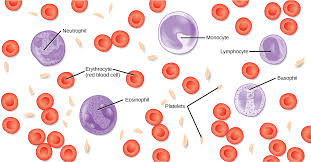
An individual at rest is said to be in danger when their oxygen saturation is this low (for instance, during surgery under anesthesia). A sustained low oxygen saturation (below 90%) is unhealthy, and low oxygen saturation (less than 30%) has the potential to be lethal quickly. In order to operate while obtaining oxygen from the placenta at significantly lower oxygen pressures (about 21% of the amount seen in an adult's lungs), fetuses synthesize hemoglobin F, a different kind of hemoglobin with a far stronger affinity for oxygen. Carbon Dioxide TransportIn the blood, CO2 is transported in three main ways. (Depending on whether it is arterial or venous blood, the exact percentages change.) Carbonic anhydrase, an enzyme found in red blood cells, converts the majority of it (about 70%) into bicarbonate ions HCO 3 by the reaction CO2 + H2O H2CO3 H+ + HCO. Approximately 7% of it is dissolved in plasma, and approximately 23% of it is bound to hemoglobin as carbamino compounds. The Haldane effect, which lessens blood's ability to bind to carbon dioxide as a result of elevated oxygen levels, is crucial for moving carbon dioxide from tissues to the lungs. However, the binding of CO2 reduces the amount of oxygen bound for a given partial pressure of oxygen due to allosteric effects on the hemoglobin molecule. The Bohr effect, often referred to as oxygen offloading from hemoglobin, is caused by a decrease in pH or an increase in the partial pressure of CO2. Transport Of Ionized HydrogenDeoxyhemoglobin is created when some oxyhemoglobin loses its oxygen. Since deoxyhemoglobin has a far higher affinity for hydrogen than oxyhemoglobin, it binds most hydrogen ions. System Of Lymph NodesBlood and lymph, continually generated in tissues from the blood by capillary ultrafiltration, are in balance in mammals. Small lymphatic veins gather lymph and send it to the thoracic duct, which empties into the left subclavian vein, where it rejoins the systemic blood supply. ThermoregulationHeat is transported throughout the body through blood circulation, and changes to this flow are crucial to thermoregulation. Warmer skin is a result of increased blood flow to the surface, which can happen during hot weather or intense activity. This accelerates heat loss. In contrast, blood flow to the extremities and skin's surface is decreased when the outside temperature is low to minimize heat loss and is preferentially pumped to the body's major organs. Rate Of Blood FlowThe blood flow rate varies significantly between various organs. The liver has the highest blood flow, which averages out to be 1350 ml/min. With 1100 ml/min and 700 ml/min, respectively, the kidney is the second most supplied organ, while the brain is the third. The kidney, adrenal gland, and thyroid are the top, second, and third most supplied tissues, respectively, in terms of relative blood flow per 100 g of tissue. Hydraulic ProcessesThe erectile tissue in the penis and clitoris are two examples of specialized tissues where blood flow restriction can be employed to create engorgement and an erection. In the jumping spider, blood is pumped into the legs under pressure, causing them to straighten for a forceful jump without the need for big, bulky muscles. This is an illustration of a hydraulic function. Blood In InvertebratesIn insects, oxygen is not transported by the blood, which is more correctly referred to as hemolymph. (Tracheal openings allow airborne oxygen to diffuse directly into tissues.) In an open system, insect blood transports nutrients to the tissues and eliminates waste. Other invertebrates use respiratory proteins to boost their ability to transport oxygen. The most prevalent respiratory protein in nature is hemoglobin. Crustaceans and mollusks possess the blue pigment hemocyanin, which also includes copper. Vanabins, proteins containing vanadium, are believed to be used by tunicates (sea squirts) as a respiratory pigment (bright-green, blue, or orange). These oxygen-carrying proteins are often freely soluble in the blood of many invertebrates, but they are present in specialized red blood cells in vertebrates. This allows for a higher concentration of respiratory pigments without increasing blood viscosity or harming blood-filtering organs like the kidneys. Giant tube worms can survive in remarkable settings thanks to their unique hemoglobins. Additionally, these hemoglobin's contain sulfides, which are harmful to other animals.
Next TopicBacterial Strep Throat
|
 For Videos Join Our Youtube Channel: Join Now
For Videos Join Our Youtube Channel: Join Now
Feedback
- Send your Feedback to [email protected]
Help Others, Please Share










